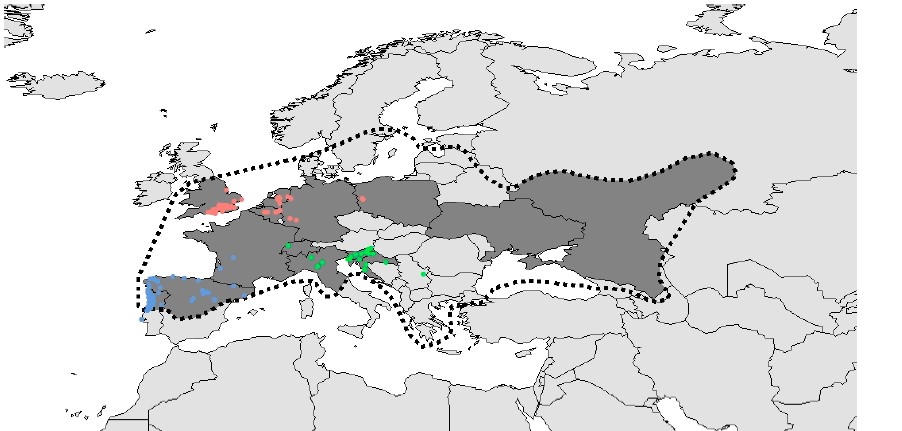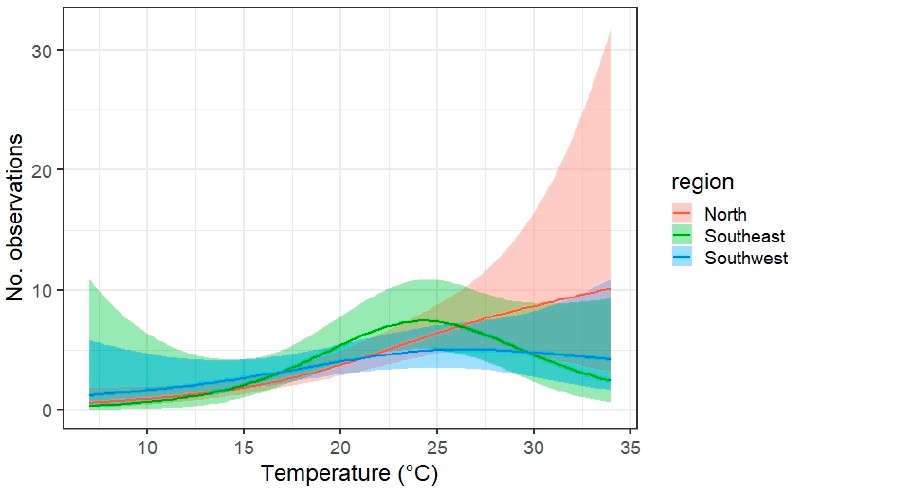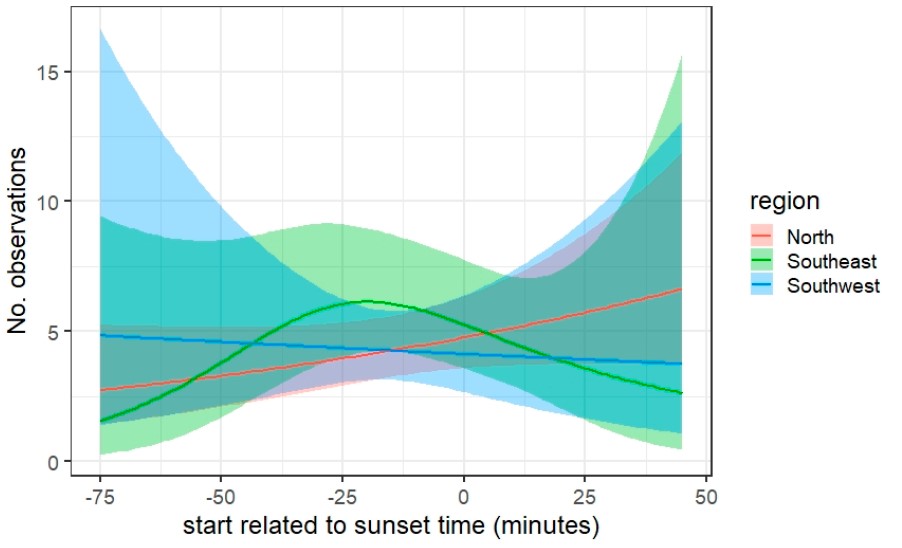Recently a first scientific paper about our citizen science project was published. In this paper we report on the start-up and initial findings of the European Stag Beetle Monitoring Network (ESBMN), our international network of stag beetle (Lucanus cervus) monitoring schemes which aims to promote the same transect monitoring all over Europe.
This protocol can be found here in detail on our website. Volunteers were asked to count stag beetles while walking a transect where stag beetles are known to occur. A network in 14 countries with 7 universities, 4 governmental research institutes or administration bodies and 6 NGOs involved in the research conservation and monitoring of this species ensures the promotion of this monitoring method in the different countries.
Till 2020, 195 transect walks were set up in a total of 13 countries (Figure 1). The largest number of transects have been established in the UK (50) and Portugal (46), but unfortunately these counties also have the largest drop-out effect for transects with multiple years of data monitoring (91% and 90%). The highest number of transects with multiple years of monitoring are found in The Netherlands (12), Slovenia (10) and Spain (10). The lowest drop-out rates are found in Slovenia (0%), Switzerland (0%), Germany (25%), The Netherlands (40%) and Croatia (40%).

Figure 1. Range (dashed line) of Lucanus cervus and monitoring transects (dots). Countries in dark grey are represented in the European stag beetle monitoring network. Different colours of transects represent different regions (red = north; green = southeast; blue = southwest).
With the data you collected, we could analyse some general patterns explaining the presence of stag beetles. First of all, increasing temperature had a positive effect on the number of observations during a transect walk in all three regions. In the southwest this pattern was least clear (Figure 2). An optimal temperature for stag beetle observations seems to be around 25 °C but might differ a bit between regions.

Figure 2. Temperature effect on the number of observations along a transect walk given for three regions. Model outcome is plotted as a line with the confidential interval as a ribbon, after taking into account the effect of the other variables in the model.
Next to that, we also found that starting the transect walk a bit earlier or later in the evening didn’t had a huge impact on the amount of stag beetles seen (Figure 3). In the southwest more individual where observed before sunset, while the opposite pattern was found in the north. In the southeast there may be an optimum 20 minutes before sunset.

Figure 3. Effect of starting time on the number of observations along a transect walk given for three regions. Model outcome is plotted as a line with the confidential interval as a ribbon, after taking into account the effect of the other variables in the model.
It is still too early to analyse the data for any trends of the species as we only started in 2016. The annual number of transect walks have increased strongly over the years and if similar efforts are maintained in the future, trend analysis will be possible. So it is very important to maintain monitoring your transect so we have long term data to find any trends.
If you want to make a difference by becoming part of our monitoring network you can register here. As a volunteer you provide us with important data vital for the monitoring of this species.
The full scientific paper can be accessed freely via: https://www.mdpi.com/2075-4450/12/9/813/html

